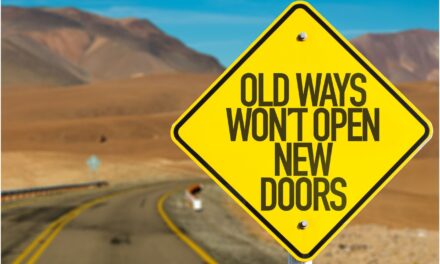If we are serious about the Great Commission, and we should be, we have to figure out how to do it in our present era
Ed Stetzer famously said that people from the 1950s would be comfortable in today’s churches but how do we make church compelling for someone from the 2020s? | by Don Corder
Since the day Jesus ascended to heaven, Christians have been commissioned to go into all the world and make disciples of all people. This apostolic mission is one of the most important faith tenets that distinguishes Christianity from all other religions.
Go therefore and make disciples of all nations, baptizing them in the name of the Father and of the Son and of the Holy Spirit, teaching them to observe all that I have commanded you. And behold, I am with you always, to the end of the age (Matthew 28:19-20).
What happens between “go” and “make”? There has to be something. The Bible does not say it, but we can reasonably assume it’s up to us to fill in the white space between the lines of this Scripture to fulfill the Great Commission for our generation. It is reasonable for us to infer that between “go” and “make” is exactly what Jesus and the disciples did in their day, which is connect. The church can’t reach all people if we don’t go; and we cannot make disciples if we do not connect with people. This mission has not changed. However, the world has changed and so has the way we go and connect.
In the first few hundred years of ministry, the church in the West was a minority religious sect in a majority secular culture. Somewhere between Emperor Theodosius I making Christianity the “religion of the empire” in the fourth century and Emperor Charlemagne reviving “the Holy Roman Empire” in the early ninth century, the church became a leading force in a majority Christian culture. The church remained more or less in this leading role until the late twentieth century, but I don’t think anyone would argue that today, the church in the West is once again a minority religious sect in a majority secular culture.
In the first few centuries of the church, the order of ministry for a minority religious sect in a majority secular culture was:
Connect
Evangelize
Convert
Disciple
“Going” meant actually traveling to a new place where most people knew little to nothing about Jesus and His kingdom. Once in this new place, the missionary/disciple would become part of the community and connect with his neighbor or her coworker. Relationships would form and grow until the credibility of the disciple was established in the eyes of the non-believer. Then the disciple would share the good news with his new friends. This led to the culminating moment of conversion when the non-believer became a new creation in Christ and then the process of training disciples or disciple-making began.
As a leading force in a majority Christian culture the order of ministry changed. The order of ministry became:
Evangelize
Convert
Connect
Disciple
Through most of the Dark Ages, it was hard to tell where the state ended and the church began. In many cases, the king of the domain was also the head of the church. As such, “going” was funded by the king and conversion was mandated by the state. There was little need to “connect” or “disciple.” By the mid-twentieth century, there were few places left in Western civilization in which there was no church and no one had heard of Jesus. We were rapidly running out of places to go. By the late twentieth century, “going” and “making” was being replaced by “hoping” and “waiting.”
Let me illustrate. Fifty years ago in the West, if someone walked through the door of a church for the first time, he was probably looking for “a church,” meaning they just moved to the area and needed a new place of worship or for some reason decided to look for a new place to worship. Today, when someone visits a church, she is probably looking for “an answer.” Before, almost everyone was “well-churched,” meaning they had attended church for most of their lives or at least believed they should be attending. They knew what was expected of them inside and outside of the church. They also knew what to expect when they began attending a new church. In order to successfully grow a church, churches just needed to meet the expectations of the new visitors. Churches focused on making worship, preaching, programming, and facilities the best they could be.
One of the most distinguishing characteristics of this late Christian-era church was the way it connected with people. Most of the connection methods were passive and rear-loaded. They were passive in that they were dependent on the new visitor initiating the connection. The church would wait for the visitor to fill out the connection card, visit the connection center, register for a new member’s class, attend Sunday school, or request a meeting with the pastor. Connecting with other believers and developing relationships with them was “rear-loaded”: it was a byproduct of the engagement initiated by the new visitor.
This all changed in the early twenty-first century. Who hasn’t heard the name of Jesus in the United States and Europe? As of the writing of Connect, if you ask 100% of Americans if they are a Christian, seventy five percent will say yes, but only twenty-one percent will be in church on Sunday. Only eight percent of Americans will attend church three or more Sundays in a month. In the post-Christian era, people are not just “un-churched”; more often than not, they are “undiscipled.” Undiscipled people are the raw material of disciple-making in the twenty-first century.
Today, people visiting for the very first time are probably looking for an answer. The church can no longer assume that visitors are well-churched, know what is expected of them, know what they want, or what to expect from a church. Many times, there is some life event like an illness, financial crisis, or moral failing that precipitates a person visiting a church for the first time or for the first time in a very long time.
Many times, undiscipled people walk through the doors of a church with a giant “should” in them. People who walk into a new church with a big “should” in them are looking for spirituality in everything: “I should solve this,” “I should try church,” “I should try something different than what I’ve been doing.” When they walk through the doors of the church for the first time or the first time in a very long time, they expect the rafters to rattle, the ground to shake, and the angels to sing. This is their moment. “OK, God, I am here. I have done my part. Do Yours.”
It is like joining a gym in January. Most people join a gym in January because they have about ten pounds of holiday “should” on them. In the same way, people are visiting a church because they think they “should” in order to find something they need. But just like the people who join a gym in January, many quit going by February.
Post-Christian era visitors do not know the routine. They don’t know how to be discipled or even that it’s an option: they do not know if discipling is something that could solve many of their problems or not. At best, they become passive participants in their own discipleship. What they do not know is that the disciples and saints are passively waiting for these new undiscipled visitors to proactively raise their hands and say “I am ready to connect. What do you want me to do?” The Post-Christian era visitor has very little firsthand experience with church and walks through the doors of the church with secular values and expectations.
Imagine if you are visiting a foreign country and walked into a restaurant. In this country, the culture is different. In this foreign culture, it is considered rude for the waiters in restaurants to approach diners until the diner initiates the process by standing and summoning them to the table with an obvious hand motion. But you don’t share the same culture and are unaware of what is considered proper behavior for diners in this foreign culture. There were twenty staff people standing around talking. Not one makes eye contact with you or proactively reaches out to you to initiate a connection. There was a big sign out front, saying “Visitors Welcome,” but no one spoke to you, helped you to a seat, or brought you a cup of water to quench your thirst. What would this make you think? How would you would feel? Would you come back?
Do you see the inherent disconnect between the late Christian era Church members and the Post-Christian era undiscipled visitor? Once again, as a minority religious sect in a majority secular culture, the order of ministry has reverted back to:
Connect
Evangelize
Convert
Disciple
Connecting with undiscipled people has to be front-loaded in a relationship, meaning the church has to make the first move and proactively provide the energy that leads to connection with visitors and undiscipled people. Most churches today are still acting like a leading force in a majority Christian culture and passively waiting for connection to happen as a visitor-initiated by-product of being in church. Both groups are waiting for the other to take the first step and initiate connection. It is a perfect recipe for decline and decay.
The church cannot “make” disciples of undiscipled people if we do not connect with them. If we are going to fulfill the Great Commission, the church is going to have to take the lead in this Post-Christian era and initiate connection with everyone we meet and in everything we do. Technology has replaced much of the “going” of the past. The making of disciples has not changed much in 2,000 years, but the in-between-the-connect part has changed dramatically in the last forty years.
In the book Connect, I provide a literal checklist of twenty-eight tested and proven tasks that will improve the “connect” of your church so you can engage in “making” disciples and fulfill your purpose, the Great Commission. If you, or a designated staff member or volunteer, does each of these tasks once a day and keeps doing them, you will connect with more undiscipled people, your church will grow, and you will receive the deep satisfaction and fulfillment of achieving your purpose.
When you succeed, we all succeed.






